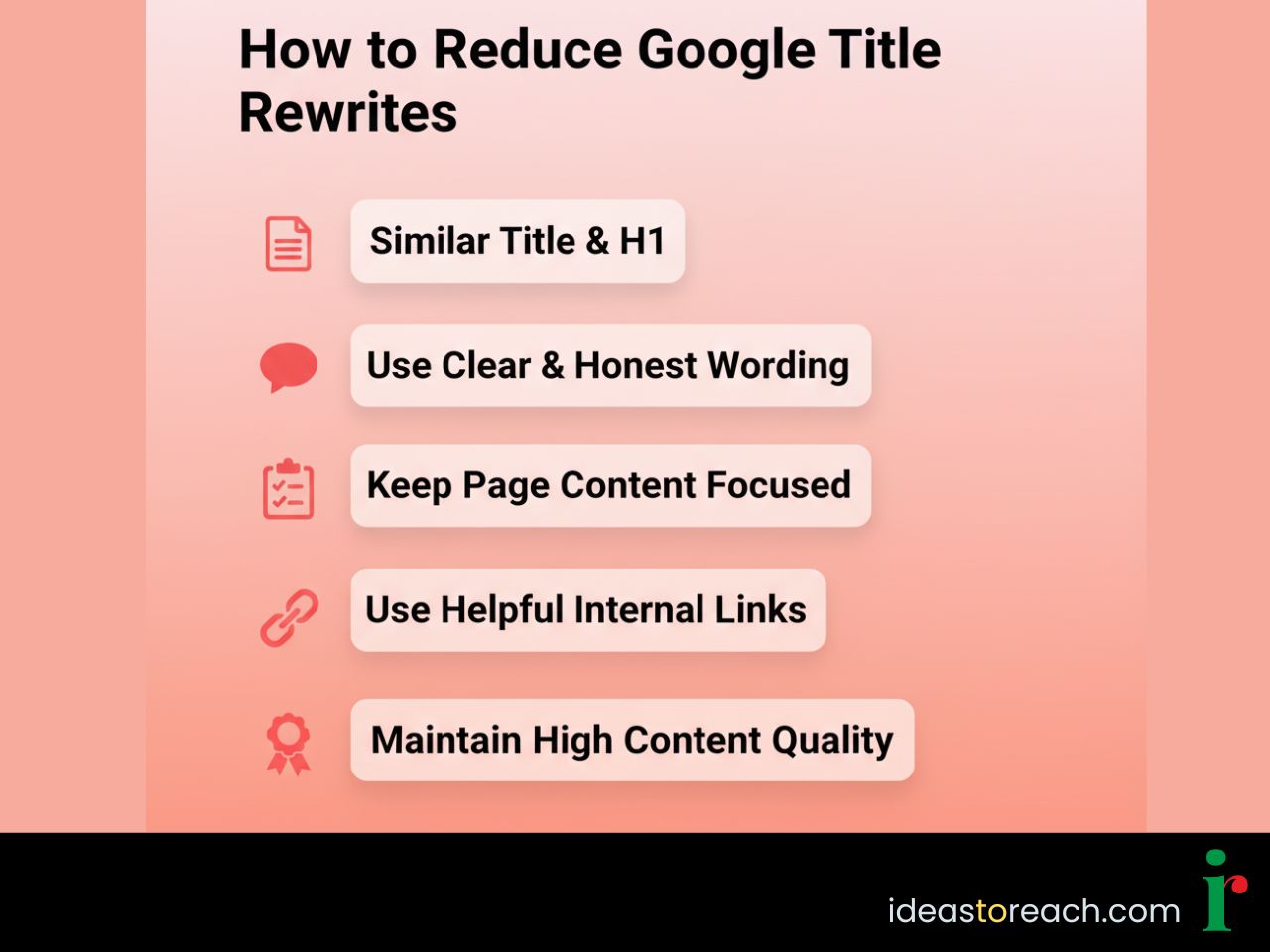
You spend time creating the perfect headline for your web page. Then you see something different appearing in Google Search results. The words are changed or shortened and sometimes replaced entirely. This is not an error. It is Google’s system working to display what it believes best represents the content and user intent.
Understanding why this happens can help you write titles that are less likely to be rewritten and more likely to perform well.
Google has confirmed that it can use any visible text on a web page as the search result title. While the title tag remains the strongest signal, it is not the only one.
The search engine looks at the overall page context, content structure, and user behavior to determine if another line, such as the H1 or a visible heading, might make a better title for a specific search.
This process is influenced by Google’s understanding of semantic alignment, click behavior, and searcher intent. Each of these factors contributes to whether your carefully written headline stays intact or is rewritten.
Google compares the wording of your title with your page content to see if they match in meaning. When there is a mismatch, Google assumes the title may mislead searchers or oversimplify the topic.
This is why keyword-heavy or exaggerated titles often get replaced. The best way to avoid this is to make sure your title and content express the same theme clearly and honestly.
For example, if your title says Luxury Apartments in Chennai with Smart Features, the page should actually describe those features in detail. A gap between promise and content invites rewriting.
To understand more about structuring content meaningfully, read Schema Markup vs Content Structure: What’s Better for SEO.
Google measures user engagement through clicks and on-page actions. If a title appears in search results but attracts fewer clicks than expected, the system may test other versions to improve performance.
This means your headline is being continuously evaluated against others in the same topic space. The aim is to find the most helpful version for the majority of users.
Signals such as time spent on page, scroll depth, and bounce rate all contribute to Google’s understanding of how well your title meets expectations.
If users quickly return to the results page, Google might try a modified headline that better matches what searchers seem to want.
Titles that do not reflect what searchers are actually looking for are the most likely to be rewritten. Google now understands intent far better through natural language processing.
This means that two users searching the same topic could see slightly different title text, depending on what version performs better for their specific intent.
When your headline connects naturally with the core question or need of the searcher, it has a higher chance of being displayed unchanged.
For better intent-driven writing, you may also refer to What is NLP and Why Is It Important for SEO.
While there is no fixed character limit, very long titles are more likely to be cut off or rewritten. Titles of around 50 to 60 characters usually display fully on desktop and mobile results.
Precision and clarity help more than length. A concise and meaningful title performs better than one overloaded with keywords.
Gary Illyes from Google has also mentioned that the system does not penalize longer titles but prioritizes clarity and relevance over format.
When Google rewrites a title, it is usually testing to improve user satisfaction. In many cases, rewritten titles generate higher click-through rates because they fit search intent better.
Research from multiple SEO analysts has shown that pages with rewritten titles sometimes receive more clicks than those using the original headline.
This suggests that Google’s goal is not to override content creators but to enhance the connection between a search query and a page’s value.

You cannot stop Google from rewriting titles, but you can make it less likely by following these practices:
Keep your title tag and H1 similar but not identical. Let them complement each other naturally.
Use clear language that reflects what the page actually offers. Avoid exaggeration or vague promises.
Make sure your on-page headings support your title and stay focused on the main topic.
Use internal linking that reinforces the relevance of the page. For guidance, see
Internal Linking for SEO Success - Simple and Best Guide.
Keep your site’s overall content quality high, as consistency builds trust signals across your pages.
If a project page uses a title like Luxury Flats in OMR at Great Prices, Google might rewrite it as Buy Luxury Flats in OMR – Modern Homes at Prime Location if data shows users respond better to it.
This does not mean the original title was wrong. It simply means Google’s system believes the new version delivers more clarity and alignment with what users type or expect.
For SEO-driven industries like real estate, balancing keyword relevance and truthful representation is essential.
Headlines must attract humans first and algorithms second. The key is to write with precision and empathy. Every title should:
Reflect the genuine purpose of the content
Use language that matches search intent
Maintain accuracy across the title, H1, and first paragraph
For inspiration on creating standout ideas that connect, read What Is a Purple Cow in Marketing and SEO? Be the One That Wins.
Also, to understand timing and momentum in ranking growth, refer to The Tipping Point in SEO – When Growth Becomes Exponential.
Google’s rewriting of page titles is part of a broader move toward intent-based search visibility. It is not a loss of control but a signal that your content must serve both meaning and clarity.
When your titles are precise, relevant, and aligned with your page content, Google has little reason to alter them.
As search evolves, writing titles that reflect trust, purpose, and alignment with user expectations will be the best safeguard against unnecessary rewriting.